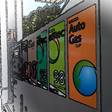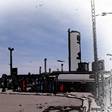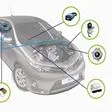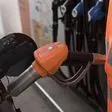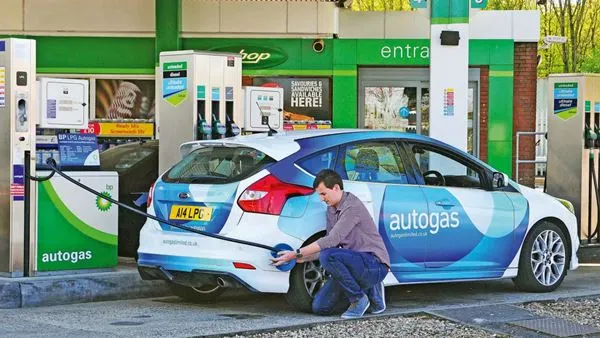
LPG Stations in UK

Table of LPG Stations in UK
| SUPPLIER | ADDRESS | CITY |
|---|---|---|
| MFG Southgate Service Station | 99 Chase Side | London |
| Midlands Auto Fuel ltd | 229-245 Walsall Road | Birmingham |
| Riverside Service Station | Kirkstall Road | Burley |
| Castlebank Service Station | 210 Castlebank Street | Glasgow |
| Spar Hillsborough | Leppings Lane | Sheffield |
| Salford Quays Service Station | Trafford Road | Manchester |
| Excellence Gas Ltd | 77 Arthington St | Bradford |
| Install Oils | Old Craighall Road | Edinburgh |
| Extra Gas | Forth St | Liverpool |
| Bristol Gas Supplies Ltd | Victoria Rd | Bristol |
| L P G Cars Ltd | Torrington Ave | Coventry |
| Mpk St Peters Road Service Station | Saint Peters Road | Leicester |
| Tudor Motors | 14-24 Tudor St | Cardiff |
| Embankment Service Station | 287 Shore Rd | Belfast |
| Flogas Britain Ltd | Canterbury Rd | Nottingham |
| Cheshire Gas | Mersey Street | Stockport |
| ESSO | Stoneferry Rd | Hull |
| Derwent Service Station | Derwenthaugh Rd | Newcastle upon Tyne |
| Ower | Romsey Rd | Southampton |
| MFG Brighton Service Station | Mill Road | Brighton |
| Fullarton Service Station | 2101 London Road | Glasgow |
| MFG Cowley Service Station | 44-56 Oxford Road | Oxford |
| Swansea Petrol Station | Pentre-Chwyth | Swansea |
| Gate Helmsley | Gate Helmsley | York |
Map of LPG Stations in UK
List of LPG Stations in UK
Network of LPG Stations in UK
Explore the historical evolution of LPG (Liquefied Petroleum Gas) stations in the UK, from the opening of the first station to the most recent developments in 2024. Also discover the projects and opening forecasts for 2025, and learn about the main operators and locations in the most important cities.
Developments since the first LPG filling station
The history of LPG stations in the UK begins in the 1990s, when the country began to adopt cleaner alternatives to petrol and diesel. The first LPG station was opened in 1994, marking the start of a significant shift towards using greener fuels.
During the first few years, expansion was slow due to a lack of infrastructure and low demand. However, with increasing environmental awareness and favourable government policies, the number of LPG stations began to grow steadily from 2000 onwards.
In 2008, the British government introduced tax incentives and subsidies for vehicles using LPG, which further boosted the installation of refuelling stations. Throughout the 2010s, the number of stations doubled, with major gas station chains beginning to offer LPG as an option at their stations.
By 2020, the UK had over 1,500 LPG stations, covering a good portion of the country and offering a viable alternative for owners of vehicles with this type of engine. Growing demand and technological improvements have facilitated continued expansion over the past decade.
In 2024, the UK continues to make progress in LPG adoption, with a focus on expanding the station network in rural and less accessible areas, as well as adding charging stations in new urban locations.
Current Projects and Forecasts for 2025
By 2025, the UK's LPG station network is expected to continue to expand with several key projects in development. The government has set ambitious targets to reduce carbon emissions, including increasing the number of LPG stations and promoting their use.
Highlighted projects for 2025 include:
- Rural expansion: New LPG stations are planned to be installed in rural and less-covered regions, with the aim of improving access for all drivers.
- Infrastructure modernization: Existing stations will be renovated and equipped with more advanced technology to improve efficiency and safety.
- Government initiatives: New incentives and policies will be implemented to encourage the adoption of LPG-powered vehicles, supporting the expansion of the necessary infrastructure.
- Collaborations with international operators: Partnerships are being formed with large international LPG operators to bring new technologies and improve network coverage.
Key Locations of LPG Filling Stations
LPG stations in the UK are strategically located to meet demand in both urban areas and key transport routes. Some of the most important cities and regions include:
- London: London, being the capital and one of the largest and most dynamic cities in the UK, has developed a robust network of LPG stations. Demand for LPG in London has grown due to government initiatives to reduce emissions and promote cleaner fuels. The LPG infrastructure in the city covers both central and suburban areas, with a focus on accessibility for a dense and diversified population. Future plans include expanding the network to improve access in less-served areas and upgrading existing stations to offer a better service.
- Manchester: Manchester has seen a significant increase in the availability of LPG stations, driven by its growth as an economic centre and demand for more sustainable fuel alternatives. The city has an expanding LPG network covering both the city centre and surrounding areas. The LPG infrastructure in Manchester is constantly developing, with new projects looking to improve station coverage and efficiency. The expansion strategy includes strengthening the network to serve the growing LPG user base.
- Birmingham: Birmingham, as the UK's second largest city, is seeing growth in its LPG infrastructure. The city is committed to reducing emissions and encouraging alternative fuels. The LPG station network in Birmingham is expanding, with a focus on covering major transport routes and residential areas. Future plans include installing new stations and upgrading existing ones to improve access and service capacity.
- Edinburgh: Edinburgh, the capital of Scotland, is also moving forward with expanding its LPG station network. The city has shown a commitment to sustainability and emissions reduction, leading to an increase in demand for LPG. Edinburgh’s LPG infrastructure spans both the city centre and outlying areas, with a focus on providing convenient access to residents and visitors. Future projects include expanding the network to improve coverage and meet the growing needs of LPG users.
Largest LPG Petrol Station Operators in the UK
Several operators dominate the UK LPG market, offering refuelling stations in key locations across the country. Here is a list of the major operators:
- Shell: Shell is one of the largest LPG operators in the UK. The company has significantly expanded its LPG station network in recent years, with locations in key cities such as London, Manchester and Birmingham. Shell is committed to the transition to cleaner fuels and continues to invest in expanding its LPG network.
- BP: BP offers an extensive network of LPG stations nationwide. The company has focused its efforts on improving the accessibility and efficiency of its stations, with a presence in both urban and rural areas. BP continues to expand its network in response to growing demand for alternative fuel options.
- Esso: Esso, part of the ExxonMobil group, has been a major player in the LPG market. With stations in London, Liverpool and Edinburgh, Esso is focused on expanding its network and modernizing its facilities to improve customer service.
- Texaco: Texaco operates a network of LPG stations in the UK, with a focus on covering both urban and rural areas. The company is working on projects to increase the number of stations and improve existing infrastructure.
- Gulf: Gulf is known for its commitment to developing cleaner fuel alternatives. Gulf's LPG station network is growing, with plans to open new locations and upgrade its facilities to accommodate market demands.
References
- https://www.shell.co.uk
- https://www.bp.com
- https://www.exxonmobil.com
- https://www.texaco.com
- https://www.gulf.com

